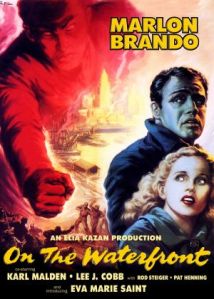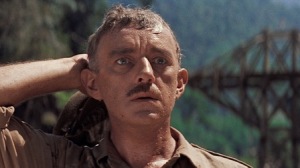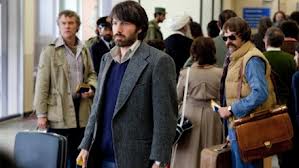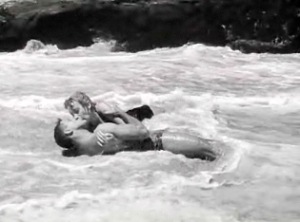
The poster mentions the song writers and their previous work “My Fair Lady” which was only a stage production in 1958 but would go on to win some Oscars of its own in a few years.
Honorè Lachaille: I’ll tell you about that blue villa, Mamita. I was so much in love with you, I wanted to marry you. Yes, it’s true. I was beginning to think of marriage. Imagine, marriage, ME! Oh, no! I was really desperate! I had to do something. And what I did was the soprano!
Madame Alvarez: Thank you, Honorè. That was the most charming and endearing excuse for infidelity I’ve ever heard. – Maurice Chevalier and Hermione Gingold discuss their past relationship, Gigi
Gigi, 1958’s Best Picture, ushers in the era of musicals dominating the Best Picture awards. Over the next 11 years, five Best Pictures were big-budget, glossy musical productions. Unfortunately, Gigi is one of the most disappointing musicals I’ve ever seen and one of the least deserving Best Pictures I’ve encountered thus far.

Three of the principles, Madame Alvarez (Hermione Gringold), Gaston (Louis Jourdan) and the “teenage” Gigi (Leslie Caron) sing “The Night They Invented Champagne”
Set at the turn of the 20th Century in Paris, Gigi is a high-spirited teen girl (play by the nearly 30-year-old Leslie Carron, who was also the female lead in the last musical to win Best Picture, An American in Paris). Gigi is being trained to be a courtesan, which for those like me who weren’t familiar with late 19th century French etiquette, essentially means she will be a high-class prostitute. The movie is very, very vague about courtesan culture, leaving me more than a little confused about what was
going on for much of the movie. Apparently courtesans were “kept women” who had a lavish lifestyle paid for by male lovers and was a “profession” to strive for in Parisian society. At any rate, Gigi is just sort of going along with the plans and tedious etiquette training of her grandmother and great aunt, themselves retired high-society women.
Meanwhile Gaston (Louis Jourdan) is a very wealthy sugar baron who is friendly with Gigi and her grandmother in a big-brother way. Gaston doesn’t really care for the playboy lifestyle but puts up with it to keep up appearances and at the urging of his horn-dog elder uncle Honorè (Maurice Chevalier).After publically humiliating his current girlfriend/lover for cheating on him, Gaston becomes even more fed up with the lifestyle and heads for vacation. Gigi uses some shrewd card playing to get to accompany him (in a platonic capacity), but Gaston realizes sweet Gigi isn’t so little anymore. After a lot of back-and-forth negotiations and straight talk about the facts of life (off camera), Gigi agrees to become Gaston’s lady friend. Gaston takes her out but is repulsed to think of his Gigi as one of these greedy, coarse women. He opts to marry her instead.
Gigi has several plot points that are bizarre, chauvinistic and unsettling by today’s standards. In fact, the movie’s most lasting contribution, the opening song “Thank Heaven for Little Girls” vaguely sounds like something a pedophile would croon (or a serial killer in a movie). There’s also an unpleasant running joke about Gaston’s disgraced former lover attempting suicide. Even if you overlook the anachronisms of 1950s attitudes (and it’s hard to believe people in 1958 were totally cool with a teenage girl being pimped out by her grandmother), the movie is just kind of boring. There’s no show stopping musical numbers like the big ballet scene in An American in Paris or bombastic song we still hum today. The main plot – the budding romance between Gaston and Gigi – takes nearly an hour to get moving and then starts and stops in a jumpy manner.
One thing the movie does have going for it is Maurice Chevalier who plays the wry old coot Honorè. Chevalier was one of the original musical stars of the sound era (his 1929 movie The Love Parade was nominated for Best Picture) and the inspiration for Jean Dujardin’s character in The Artist (and some have argued Pepè le Pew, as well). Chevalier, despite getting on in years, is still filled with charm and charisma and lights up the screen. There’s one scene where he has a duet with Gigi’s grandmother about their failed relationship from years’ past (where he misremembers ever detail) that is the most charming part of the movie, by far. As a modern day viewer, I kept waiting for the plot to circle back to this thread and Honorè, despite his years of chasing tail, to finally settle down with the grandmother as his one true love, maybe even as the impetus for Gaston to make an honest woman of Gigi. But the plot never comes back to it.
As a side note, Leslie Carron seems completely different from this movie versus An American in Paris seven years earlier. Her very heavy French accent was almost completely gone by the time of this movie!
Trivia: Despite my disapproval, Gigi won nine Oscars, a record amount at the time. Alas, the record stood for just one year. What overtook it? Tune in next time….
Other Oscars: Best Director (Vincent Minnelli); Best Adapted Screenplay ; Best Art Direction; Best Cinematography; Best Costume Design (Cecil Beaton, winner) Best Film Editing; Best Original Score; Best Original Song (“Gigi”)
Box Office : $6.7 million (fifth for the year);
Other notable films of 1958: Vertigo, Car on a Hot Tin Roof*, Auntie Mame*, The Defiant Ones*, Separate Tables*, South Pacific$, I Want To Live, No Time For Sergeants, The Vikings, The Blob
* Best Picture Nominee
$ Top Box Office ($16.3 Million)







